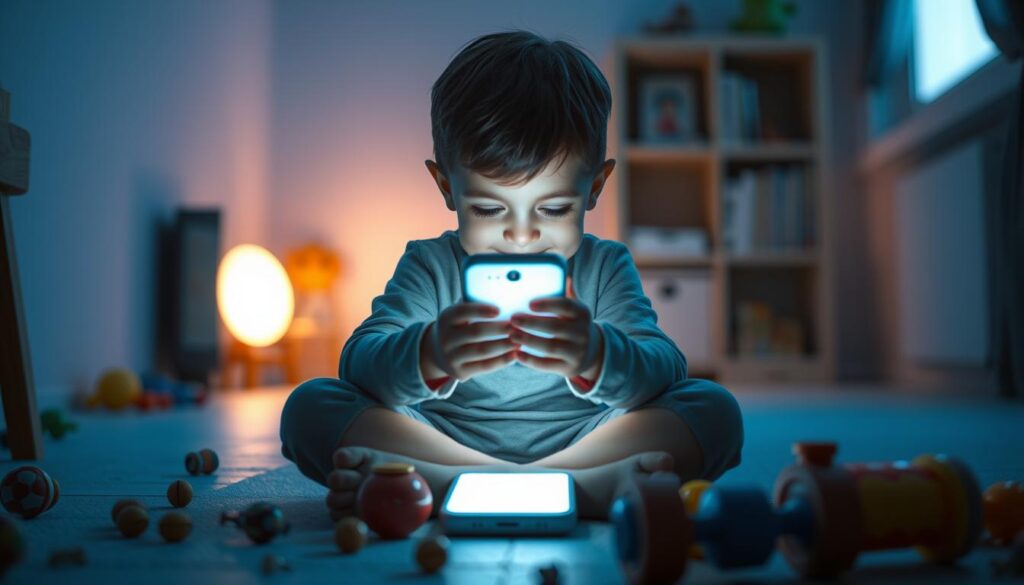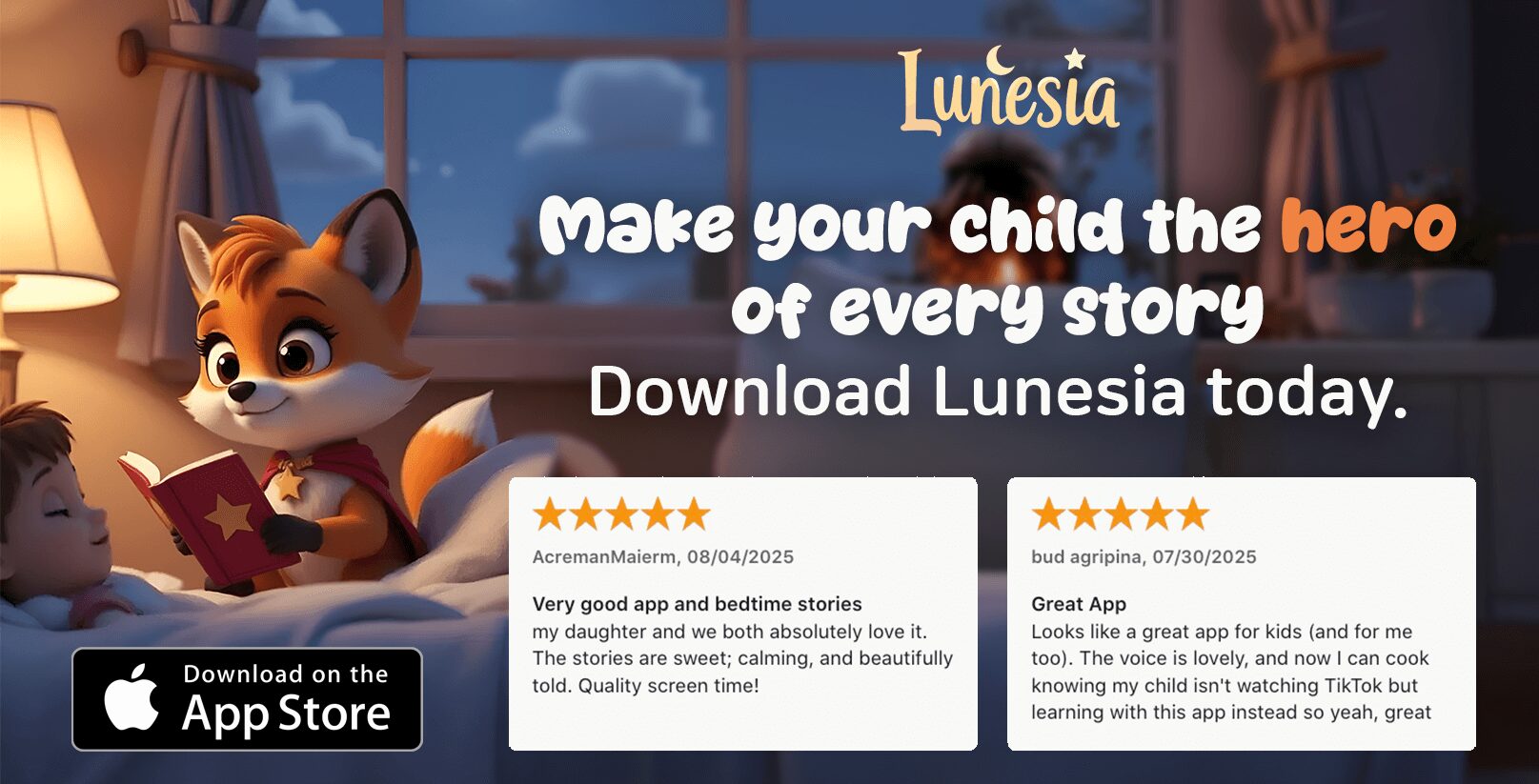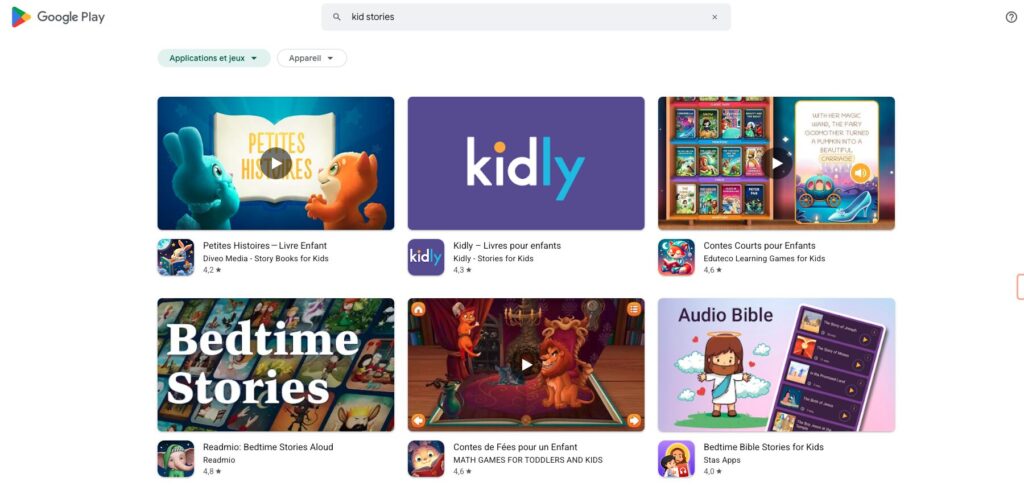As a parent, you’ve likely wondered whether introducing digital devices to your little one is the right choice. It’s a decision filled with questions and concerns. On one hand, media can offer educational content and entertainment. On the other, it’s hard to ignore the potential risks tied to excessive use.
Many families face this balancing act. While some apps and programs can spark creativity and learning, too much exposure may lead to sedentary habits or other challenges. The key lies in finding a healthy middle ground.
In this article, we’ll explore the benefits and drawbacks of screen time for young kids. You’ll gain practical tips to create a balanced routine that supports their growth and well-being. Let’s dive in and make informed choices together!
Understanding Screen Time for Children
Digital devices are everywhere, but how do they fit into a child’s routine? To make informed decisions, it’s essential to understand what “screen time” truly means. This term refers to any period spent in front of devices like TVs, computers, or smartphones. It includes everything from educational apps to entertaining videos.
Defining Screen Time and Digital Media
Screen time encompasses a wide range of activities. Watching cartoons, playing games, or even video chatting with family all fall under this category. Digital media, on the other hand, includes both educational and entertainment content. For example, a math app can be a valuable learning tool, while a cartoon might simply provide fun.
Experts suggest that not all programs are created equal. High-quality educational content can support learning, while purely entertainment-based shows may offer less value. Knowing the difference helps parents make smarter choices.
The Role of Sedentary Activities in a Child’s Routine
Spending too many hours in front of a device often leads to sedentary behavior. This means less physical activity, which can impact a child’s health. Studies show that kids who spend more than two hours a day on screens are more likely to have lower activity levels.
To combat this, parents can set daily limits. For instance, the American Academy of Pediatrics recommends no more than one hour of screen time per day for kids aged 2 to 5. Younger children, especially those under 2, should avoid it altogether, except for video chatting.
Balancing tech use with active play is key. Encouraging outdoor activities or creative play can help offset the effects of sedentary habits. By understanding these factors, you can create a healthier routine for your little one.
The Pros and Cons of Screen Exposure for Young Kids
Deciding when to introduce digital devices to your little one can feel like navigating a maze. On one hand, tech can be a powerful tool for learning and connection. On the other, it’s easy to worry about the potential downsides. Let’s explore both sides to help you make the best choice for your young child.
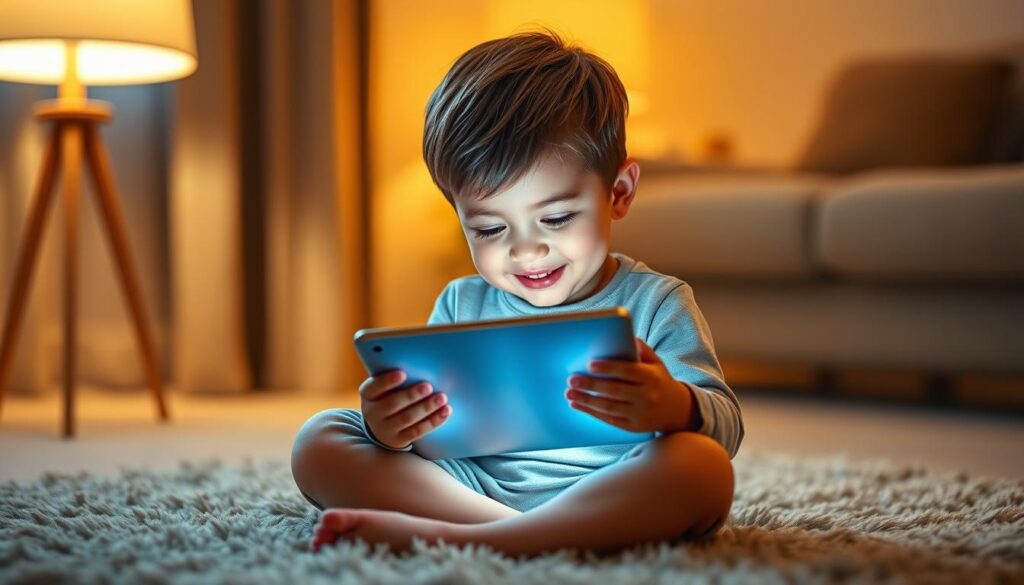
Benefits of Controlled Screen Use
When used wisely, digital devices can offer incredible benefits. Educational apps and programs like Sesame Street or Daniel Tiger’s Neighborhood can spark creativity and learning. These tools often introduce new concepts in a fun, engaging way.
Tech can also bring family closer. Watching a show together or playing an interactive game can create shared moments of joy. It’s all about finding the right balance and making tech a part of a well-rounded routine.
Risks to Health and Development
Too much screen exposure, however, can have serious consequences. Studies link excessive use to sleep problems, weight gain, and even delays in language and social skills. The blue light from devices can disrupt sleep patterns, making it harder for kids to rest well.
Sedentary habits are another concern. Kids who spend hours in front of a device may miss out on active play, which is crucial for physical and mental health. It’s important to set limits and encourage other activities like outdoor play or reading.
Balancing Entertainment with Educational Value
Not all programs are created equal. While some shows are purely for entertainment, others offer real educational value. The key is to choose content that aligns with your child’s age and interests.
For example, apps that encourage problem-solving or teach new skills can be a great addition to their routine. By being selective, you can ensure that tech use supports their growth rather than hindering it.
Remember, every young child is different. What works for one may not work for another. The goal is to make informed choices that benefit your family and your child’s development.
Impact of Screen Time on Child Development and Learning
Understanding how digital media affects your little one’s growth is crucial for making informed decisions. While devices can offer educational value, their overuse may hinder essential developmental milestones. Let’s explore how exposure impacts brain, language, and social skills, and what research says about potential delays.
Effects on Brain, Language, and Social Skills
Excessive use of devices can alter brain development, particularly in younger kids. Studies show that prolonged exposure reduces opportunities for hands-on, interactive learning. This can affect critical thinking and problem-solving abilities.
Language development also takes a hit. When kids spend too much time on videos or games, they miss out on reciprocal conversations with adults. These interactions are vital for building vocabulary and communication skills.
Social skills may suffer too. Real-life interactions are replaced by digital ones, making it harder for kids to develop empathy and teamwork. Interactive play is essential for fostering these abilities.
Research Findings on Developmental Delays
Research from JAMA Pediatrics highlights concerning trends. Kids with higher screen exposure often face delays in fine motor skills and attention spans. Changes in the brain cortex, responsible for critical thinking, have also been observed.
Dr. Jennifer F. Cross notes that excessive use can replace activities like outdoor play, which are crucial for physical and mental health. This imbalance can lead to attention problems and even behavioral issues.
While educational content has its place, relying too much on devices may curtail important developmental experiences. Finding a balance between digital media and active play is key to supporting your child’s growth.
Practical How-To Guide for Balancing Daily Screen Time
Creating a balanced routine for your little one doesn’t have to feel overwhelming. With a few simple steps, you can manage tech use while encouraging growth and healthy habits. Let’s explore practical ways to structure your day for success.
Establishing Screen-Free Zones and Routines
Start by designating areas in your home where devices are off-limits. For example, keep TVs out of bedrooms and turn off screens during meals. This helps create boundaries and promotes better sleep and family connection.
Set specific hours for digital use, like one hour day for entertainment. Use timers to signal when it’s time to take a break. Consistency is key—stick to the schedule to help your child understand expectations.
Integrating Active Play and Alternative Learning Activities
Balance tech use with activities that spark creativity and movement. Board games, puzzles, and outdoor adventures are great alternatives. These activities support development and keep kids engaged without relying on devices.
Incorporate educational tools like interactive books or hands-on projects. These can reinforce learning while reducing reliance on screens. Encourage your child to explore hobbies that build skills and confidence.
Make physical play a priority. Activities like biking, dancing, or playing tag not only boost energy but also improve focus and attention. A mix of active and quiet time ensures a well-rounded routine.
By creating structured routines and offering diverse activities, you can help your child thrive. Small changes today can lead to healthier habits tomorrow. Let’s work together to make every moment count!
Expert Insights and Parental Strategies for Making the Right Choice
Navigating the world of digital media for your kid can feel overwhelming, but expert advice can guide you. Pediatricians and child behavior specialists offer practical strategies to help you make informed decisions. Let’s explore their insights and actionable tips to create a balanced approach.
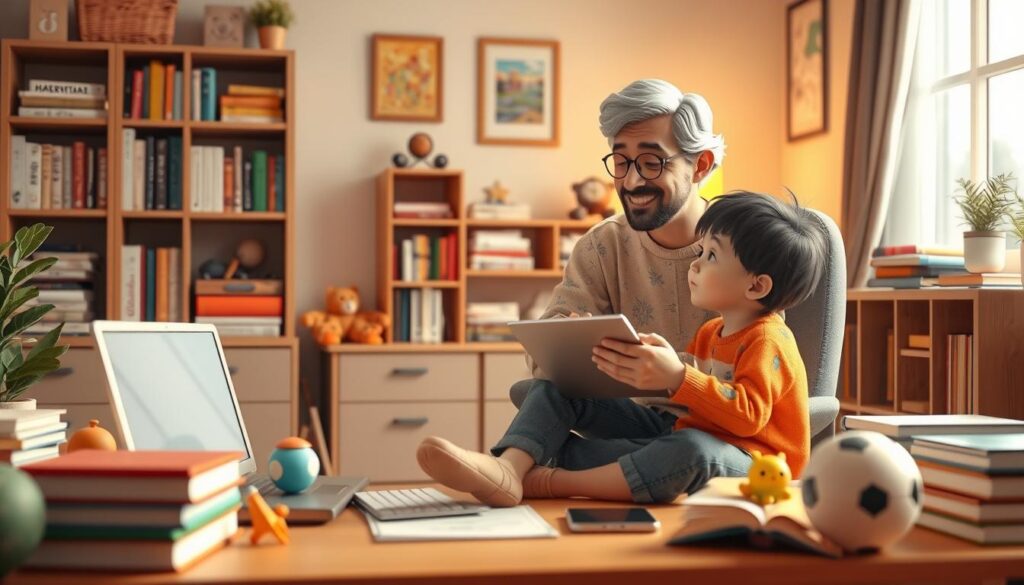
Advice from Pediatric and Child Behavior Experts
Dr. Jennifer F. Cross, a renowned pediatrician, emphasizes the importance of co-viewing. “Watching programs together allows you to discuss content and reinforce learning,” she explains. This active engagement helps kids process what they see and apply it to real-life situations.
Another key strategy is selecting high-quality programming. Educational shows and apps can support cognitive and language development. For example, programs like Sesame Street or Daniel Tiger’s Neighborhood are designed to teach valuable skills while keeping kids entertained.
Using Research and Guidelines to Inform Your Decisions
Research from the American Academy of Pediatrics (AAP) suggests setting clear limits on time spent with devices. For kids aged 2 to 5, one hour per day is recommended. Younger children should avoid it altogether, except for video chatting.
Here’s a quick guide to help you establish healthy habits:
| Activity | Recommendation |
|---|---|
| Co-viewing | Watch together and discuss content. |
| Educational Programs | Choose shows that teach skills. |
| Screen-Free Zones | Keep devices out of bedrooms and during meals. |
| Active Play | Balance tech use with physical activities. |
Setting a consistent routine is also crucial. For instance, designate specific hours for digital use and stick to them. This helps kids understand boundaries and reduces the risk of overuse.
Finally, remember to model healthy habits. Kids often mimic their parents, so moderating your own child watch habits sets a positive example. As Dr. Cross notes, “Your actions speak louder than words.”
“By combining expert advice with practical strategies, you can create a balanced approach that supports your child’s growth and well-being.”
With these insights, you can confidently navigate the challenges of digital media. Small changes today can lead to healthier habits tomorrow. Let’s work together to make every moment count!
Conclusion
Finding the right balance between tech and play can feel challenging, but it’s entirely possible with thoughtful planning. By setting clear routines and incorporating active play, you can create a healthy environment for your little one. Remember, moderation is key—whether it’s programming or other activities.
Expert advice and research can guide your decisions. For instance, limiting digital use during meals and before bed helps maintain a balanced week. Small changes, like swapping an hour of tech for outdoor play, can make a big difference in your child’s well-being.
Ultimately, the thing that matters most is your involvement. By choosing high-quality content and co-viewing, you turn tech into a tool for learning and connection. Start with one thing at a time, and gradually build a routine that works for your family.
Thank you for taking the time to explore these tips. With a thoughtful approach, you can create a nurturing environment that supports growth and happiness. You’ve got this!
FAQ
What is considered screen time for young kids?
Screen time includes any activity involving digital devices like smartphones, tablets, TVs, or computers. It can range from watching videos to playing games or using educational apps.
How does excessive device use affect a child’s health?
Too much exposure can lead to issues like poor sleep, weight gain, and reduced physical activity. It may also impact attention spans and social skills over time.
Are there benefits to allowing my child to use devices?
Yes, when used wisely, digital media can support learning, creativity, and problem-solving. Educational programs and apps can be valuable tools for development.
How can I set limits on my child’s device use?
Create a daily routine with specific hours for activities. Designate screen-free zones, like the dining area, and encourage outdoor play or reading as alternatives.
What are some alternatives to screen-based activities?
Encourage active play, arts and crafts, or family reading time. These activities promote physical health, creativity, and bonding without relying on devices.
How do I choose age-appropriate content for my child?
Look for programs or apps that align with their developmental stage. Check reviews, ratings, and recommendations from trusted sources like pediatricians or educators.
Can screen time affect my child’s sleep?
Yes, exposure to blue light from devices can disrupt sleep patterns. Avoid using devices at least an hour before bedtime to help them wind down.
What do experts recommend for balancing screen use?
Experts suggest following guidelines from organizations like the American Academy of Pediatrics. These include limiting daily use and prioritizing interactive, educational content.
